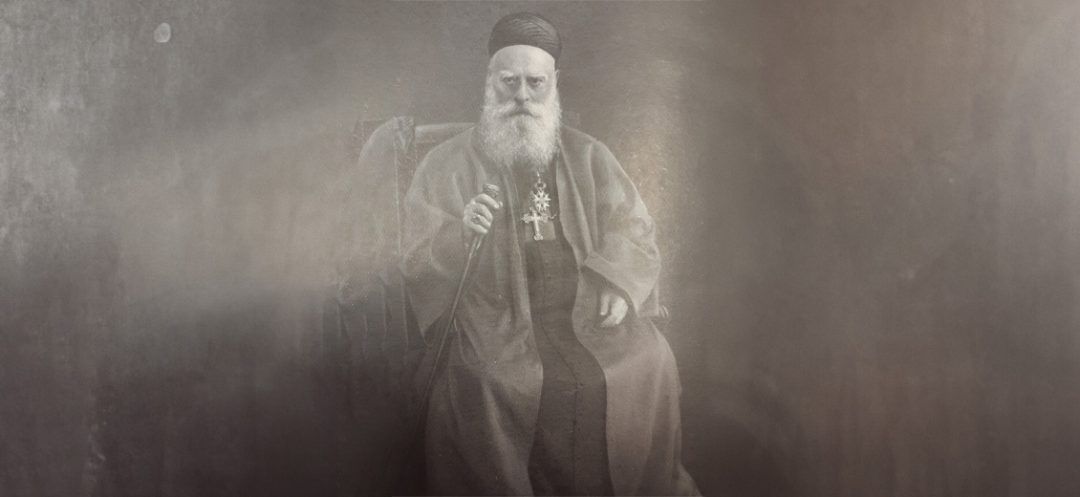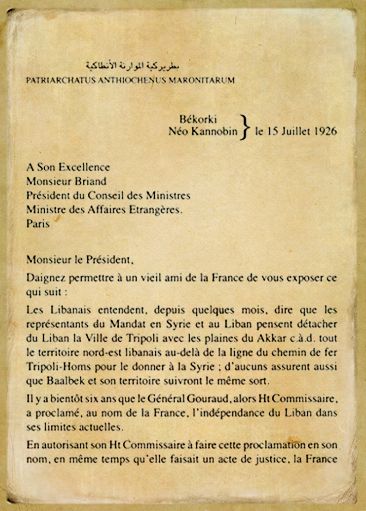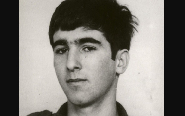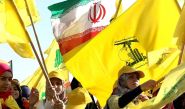
As the 72nd Maronite Patriarch of the See of Antioch since its founder Saint John Maron, Elias Pierre Hoayek brought to life the vision of Lebanon as imagined and written in the 17th century by Patriarch Estephanos Doueihi. This vision materialized with the creation of Greater Lebanon in 1920 and its consecration to Our Lady of Lebanon in Harissa as early as 1908. Some claim that the French proposed establishing a Christian state, which he categoricallyrejected, emphasizing the altruistic mission of Christians in the East. However, historical archives contradict this revisionist narrative.
Just like Patriarch Estephanos Doueihi, Elias Hoayek was deeply influenced by his education in Rome. This experience allowed both of these prominent figures to envision Lebanon as a cohesive entity in cultural, geographical, ecclesiastical, literary, and artistic terms. Elias Hoayek further expanded this vision by adding the state and political dimensions.
Bkerke
In 1830, Bkerke replaced Dimane as the patriarchal seat of the Syriac Maronite Church, better aligning with the demographic reality of Lebanon, and later, in 1861, with the Mount Lebanon Governorate (Mutasarrifate). This decision shifted the focal point from the north to the central region of the country.
Elias Pierre Hoayek, elected patriarch in December 1899, held the See in Bkerke until his death, reinforcing the central role of the Church and its political influence within Lebanese geography. As the 72nd Maronite Patriarch of the See of Antioch since its founder Saint John Maron, he realized the vision of Lebanon outlined by Patriarch Estephanos Doueihi in the 17th century. Driven by their faith in an eternal and sanctified Lebanon, Estephanos Doueihi and Elias Hoayek realized their vision through the imagery of the Virgin Mary, Queen of Lebanon.
For Doueihi, this was represented by the grand fresco of the Coronation of the Holy Virgin in Qannoubine, while for Hoayek, it was the statue of Our Lady of Lebanon, inaugurated in Harissa in May 1908. Both had grasped in Rome the importance of art and architecture in establishing and integrating culture into the national landscape.
 Letter of July 1926 – Archives of Bkerke, document 95, folder 44, in Political documents of the Patriarche Hoayek, Fr. Estéphan Khoury.
Letter of July 1926 – Archives of Bkerke, document 95, folder 44, in Political documents of the Patriarche Hoayek, Fr. Estéphan Khoury.In this context he wrote: "This precarious situation causes unrest in Lebanon, and faced with this uncertainty, the loyal and virtuous ones are driven to emigrate."
This statement by Patriarch Hoayek strongly contradicts all the romanticized notions surrounding his purported vision of Lebanon as a message. This distortion, along with those who propagate it, is directly responsible for the decline in Lebanon’s Christian demographic —a trend that Elias Pierre Hoayek predicted as early as the 1920s.
The Conditions for Sustainability
Patriarch Hoayek had repeatedly outlined the essential conditions for ensuring the country’s continuity. The success or failure of his project depended on meeting these conditions Above all, he explicitly wished for the French mandate to continue indefinitely and recognized the existential risks of its termination. He frequently referred to “France, which the Lebanese hoped would always remain in their country,” he noted. This condition was entirely disregarded, as France was driven out of Lebanon while it was under occupation and in dire need of its allies. Lebanon was meant to be part of the Western world, embodied at the time by France. The patriarch saw this national project as “a stronghold of unwavering loyalty to France,” symbolizing loyalty to the West. However, this second condition was miserably ignored, as the independence heroes aligned Lebanon with the Arab East, both culturally and politically. They distanced the country from its natural allies, entangling it in Palestinian causes and Pan-Arabism. In his letter to Aristide Briand, the patriarch wrote that “the main purpose behind the creation of the Lebanese state was to establish a refuge for all Eastern Christians.” However, this condition was miserably disregarded when Lebanon refused citizenship to Maronites who emigrated in the 19th century, as well as to Syriac communities fleeing death in Syria, Iraq, and Turkey.
Redefining the Borders
In his correspondence with the Quai d’Orsay, Elias Hoayek opposed the ceding of Tripoli and Baalbek to Syria, highlighting the need for population exchanges, as had been done in other regions severed from the Ottoman Empire. In fact, the 1923 Treaty of Lausanne required in its first article "the compulsory exchange of Turkish nationals of Greek Orthodox religion living in Turkish territories, and Greek nationals of Muslim religion residing in Greek territories." While the methods he suggested may seem shocking by today’s standards, the patriarch at the time believed this approach would ensure "lasting peace and security for future generations." He did not believe in the viability of a multicultural country and had made his position clear on several occasions. His successor, Antoine Pierre Arida, faced fierce opposition from ideologues of Lebanism and Arabism, who managed to isolate him with the help of the Vatican and undermine Patriarch Hoayek’s plan.
Today, they distort its core essence, drowning it in romanticized and lethal rhetoric.



Comments